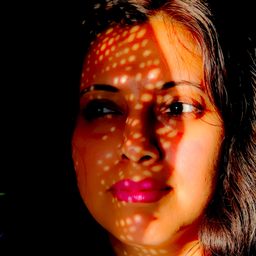Laughing at the Waves
Americans drink Margarita like there'll be no tomorrow
MOREAmericans do love Margarita, 185,000 Margaritas vanish in the darkness of human innards every hour.
Laughing at the Waves
- Vodka 4.5 cl
- Dry Vermouth 1.50 cl
- Campari Bitters 1.5 cl
- Midori Melon Liqueur 3 cl
- Blue Schnapps Or Curacao 3 cl
- Lemonade Mix Fill -
Any Glass of your Choice

Laughing at the Waves Ingredients
Vodka,Dry Vermouth,Campari Bitters,Midori Melon Liqueur,Blue Schnapps Or Curacao,Lemona...
Laughing at the Waves Recipe
Pour ingredients into a mixing glass half-filled with ice cubes. Stir well, and strain into a cocktail glass. Garnish with a lemon twist, and serve.
Vodka
Vodka is an European clear distilled alcoholic drink that has been one of the most popular drinks across the world .
You'll find it to be the most popular spirit in drink making because of it's neutral taste and absence of flavour and colour.
Vodka often replaces Gin in many traditional cocktails
Vodka is known to be good for the heart, and if consumed in moderation, can prove to be good for cardiovascular health
Note that these days there are flavoured Vodka available in the market too, and some cocktails do make use of them.Dry Vermouth
Vermouth the French for German Wermut, Wormwood in English, is an aromatic fortified Wine, flavoured with various botanicals like roots, barks, flowers, herbs, seeds and spices.
Although traditionally Vermouth was used for medicinal purposes, it has been also served as an apéritif in its modern avatar. The modern Vermouth first appeared in and around the 18th Century in Turin. By the late 19th Century it became very popular with bartenders as a key ingredient in cocktail mixology.
Martini, Manhattan, Rob Roy and Negroni were a few cocktails that Vermouth grew in popularity with. But later during the 20th Century, Vermouth slowly lost its glory and Dry Martinis and extra Dry Martinis with little or no Vermouth gained over the original Martini. Modern Martinis usually have a splash of Vermouth to add that herbacious texture to it.
Historically, there have been two Vermouth types, Dry and Sweet, but with demand variations have come up now. that include extra-dry white, sweet white, red, amber and rose.
Vermouth is produced by adding proprietory mixture of aromatic botanicals to a base wine or a base wine plus spirit or spirit only, which is usually redistilled before adding it to a base of neutral grape wine or unfermented wine must ( freshly pressed grapes and the juice ). After the wine is aromatised and fortified. it is sweetened and the end product is a Vermouth.
Dry Vermouth is what makes the character of the original Martini, and a Dry Vermouth has less sugar and is more herbacious but less spicier than Sweet Vermouth.Campari Bitters
Alcoholic spirits infused with botanicals such as herbs, roots, fruits and leaves, are called Bitters.
Bitters consist of water and alcohol which has been steeped with various herbs, fruits, leaves etc. Bitters are not to be drank neat or even as the base spirit of a cocktail, these are usually concentrated alcoholic concoctions and just a dash or a few drops are all we need to add that taste to a cocktail.
There are exceptions and some bitters like the Italian Amari is consumed without mixing in a cocktail. It has a bitter sweet taste and alcohol content is somewhere between 16%-40%. Generally in Europe its being consumed as an after dinner digestif.Midori Melon Liqueur
A liqueur is an alcoholic beverage made mostly from rectified neutral spirits flavoured with sugar, fruits, herbs and spices. Liqueurs are often served as aperitif or digestif or used as bitters, and some are ceremonial or have regional cultural significance.
Most liqueur recipes that date back to the medieval or early modern era tend to have secret recipes and legends following them trough centuries. Liqueurs mostly began in the laboratories of pharmacists as medicines or at homes as ways of preserving seasonal fruits, or were created by monks in their monasteries. and then took off as fragrant, flavourful liqueurs, either filtered to be clear or cloudy.
Liqueurs are created by infusing or macerating fruits and herbs in neutral grain spirit, brandy base like cognac, rum, vodka or even whisky and then filtering the infused alcohol to produce the unique sweet beverage.Blue Schnapps Or Curacao
Schnapps is an alcoholic beverage that has no single form, it is in general a grain spirit that has a fruity, spicy and herbal flavour in it. It can thus be created the way liqueurs are created by steeping botanicals in grain spirits and filtering, or like a brandy be distilled from a fruity wine, or even simple infusion of botanicals, syrups or even artificial flavouring agents in a neutral spirit.
Schnapps are typically raspberry, apple, pear, plum, peach, cherry or appricot flavoured.
In Europe Schnapps usually takes the form of an Obstler or Obstbrand, which are traditionally made by fermenting macerated fruit and then distilling the fermented liquor in a process akin to the process of making a brandy.
Obstler ( the German for Fruit, Obst ) has similarity with several verities of Rakija of the Balkans and Easter Europe.
The other form that a Schnapps can take in Europe is a Geist. Geist is created by steeping and infusing berries into neutral spirits for weeks and then distilling it. This too is pretty similar to a fruit brandy.
The third form a Schnapps takes is of a liqueur, these are created the same way all liqueurs are created by infusing fruits, berries and herbs in neutral spirits and filtering the product into a clear liquid.
In America, Schnapps take the form of an inexpensive, heavily sweetened liqueur. American Schnapps are typically between 15% and 20% ABV (30–40 proof), while European Schnapps are usually 30% to 40% ABV or 60-80 US proof.Lemonade Mix Fill
This sweetened lemon flavoured beverage is an eternal popular throughout the world and there are varieties of homemade lemonades found everywhere. In North Africa and South Asia, cloudy lemonade dominates, be sure if your cocktail requires a clear lemonade or a cloudy one, which is indication of fruit pulp presence in the mix.
Trending Recipes
Please Note All Recipes and Articles on this site are for entertainment and general information only. None of it is to be considered final or absolutely correct or medical in nature.
However, we have embarked on a journey of manually updating the relative strength of cocktails, their flavour profile and in the future aim at providing approximate calories per drink too.
Blue Tick Project:We aim at manually validating and verifying each cocktail in their current context and mark them as valid, where, a blue tick would mean that the recipe has been verified and is 100% accurate while an orange tick would mean the recipe has low confidence.
Where as a grey tick would mean that the recipe has not yet been manually validated or verified recently.
Note: The Cocktail photos used are graphical representations of the glass and colour of a drink, these are generated using information from the recipe and we personally strive at providing real photographs of cocktails and we hope we can replace all representational photos with real photos soon.
Contact Us using the Email Contact on the Sidebar if you think any Copyrighted photo has been unintentionally used on this site, and we'll take remedial action.
Some of the Photos are sourced from Royalty Free Photo Platforms like FreePik, Unsplash and Wikimedia Commons
About Us
Neel B and Mani, we are a team of two, from Calcutta, India. We are professional software engineers and passionate cocktail enthusiasts. We built this app because we saw a need for a more comprehensive and user-friendly way to find cocktails and bartending recipes. We hope you enjoy using our app as much as we enjoyed making it!We decided to use our technology skills to help others who were in the same position as us and wanted to experiment with making cocktails at home but didn\u2019t know where to start. We have been working together for more than two years and has managed to collect an extensive library of recipes as well as tips and tricks for making the perfect cocktail.
 Neel B is an Electronics and Telecommunications Engineer and martial arts and fitness enthusiast. He is an avid reader, compulsive doodler, and painter. His love for cocktails arises from the art in it and the history that traces the ups and downs of modern civilisation over centuries.
Neel B is an Electronics and Telecommunications Engineer and martial arts and fitness enthusiast. He is an avid reader, compulsive doodler, and painter. His love for cocktails arises from the art in it and the history that traces the ups and downs of modern civilisation over centuries. Maniis an ERP and SaaS developer and architect by day and a cocktail enthusiast in her leisure. She holds a Masters in Computer Application and Programming. In addition to writing stories on the history of cocktails and alcohol, she has a special interest in cocktails in literature. She believes that the perfect cocktail can make any moment special.
Maniis an ERP and SaaS developer and architect by day and a cocktail enthusiast in her leisure. She holds a Masters in Computer Application and Programming. In addition to writing stories on the history of cocktails and alcohol, she has a special interest in cocktails in literature. She believes that the perfect cocktail can make any moment special.
